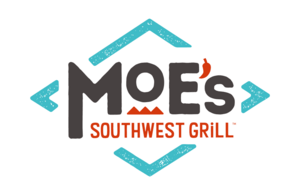Say It Better.
Connect Deeper.
Win More Trust.
Marcus Sheridan is a world-renowned communication expert, bestselling author, and captivating keynote speaker specializing in Transformational Communication.
Trusted by 100s of Brands Worldwide


.svg.png?width=2560&height=545&name=Microsoft_logo_(2012).svg.png)


Human connection is a lost art in today's digital world.
We're less connected in marketing, in sales, and in leadership than we've ever been.
It's the #1 reason for instability within organizations.
Whether your challenge is not enough leads, low close rates, or high turnover and employee dissatisfaction, it’s almost always due to a lack of human connection with your buyers and with your people.
But it doesn't have to be this way...
Marcus Sheridan is teaching organizations around the world exactly how to solve this problem as they simply...
Say It Better.

About Marcus Sheridan
Marcus Sheridan, an acclaimed communication expert and author, revolutionized business communication with his "They Ask, You Answer" philosophy, detailed in his bestselling book. His innovative approach, honed over two decades, led his swimming pool company to global prominence.
As a keynote speaker, he has inspired audiences worldwide, including at TEDx and HubSpot Inbound, and has been featured in major media like the New York Times and Forbes. Sheridan's work, which has generated over $1 billion in revenue, emphasizes transparency and simplicity in communication, resonating with a global audience.
$1B+
in economic impact
(from businesses implementing
Marcus' frameworks)
500+
Keynotes
250+
Workshops
15
Countries spoken
Keynotes
Rated the “#1 Marketing Book to Read” by Mashable & listed in the “Top 5 Marketing Books of All Time” by The Book Authority
Learn how They Ask You Answer has become the standard for Digital Sales and Marketing for over 100,000 businesses all over the world.

Master the art of communication with tips and real-world lessons from Marcus Sheridan
A weekly newsletter helping organizations and leaders deepen trust and human connection through transformative communication—in leadership, in sales, and in marketing.

“Say It Better”
Delivered to Your Inbox
What Event Managers Are Saying...
“Thank you for the work you did for us. You absolutely knocked it out of the park and were the talk of the event. We have also had a really good response internally at Cisco, and are looking at other opportunities in which to partner.”
Michael Hopfinger, Director Cisco, Cisco Velocity 2019

“Marcus Sheridan speaks with unrivaled passion and authority. He has a masterful understanding of the challenges and opportunities for small businesses in the digital age. His presentations are motivating and insightful, and he leaves audiences with clear, actionable takeaways to improve their businesses. A world-class thought leader.”
Zach Phillips, Director of Professional Development, NAMM

“Marcus was the most talked and tweeted about speaker for the day and left the audience buzzing for more. His ability to captivate an audience is truly remarkable. At the end of the conference, many people came up to me to comment on his high-energy presentation and say thank you. Having him speak was hands down the smartest decision I made in programming the event. ”
Pat Lemieux, Events Producer

“Our customers raved about the content Marcus delivered. I was impressed by how effective Marcus was at engaging the audience. I got feedback from customers shortly after the event on how they are making changes in their business because of what Marcus said. He made such a big impression on our team that we have further engaged Marcus to come back to help us internally with some training. ”
Greg VanDeWalker GreatAmerica Financial

“Our Brightcove #PLAY2018 attendees loved Marcus. He instills enthusiasm, creativity and a multitude of takeaways into his sessions, which left the audience delighted and ready to conquer their company's sales and marketing strategies with online video. I am excited to work with Marcus on future events and projects. ”
Britta Schellenberg, Brightcove, VP Corporate Marketing Operations

